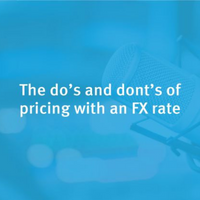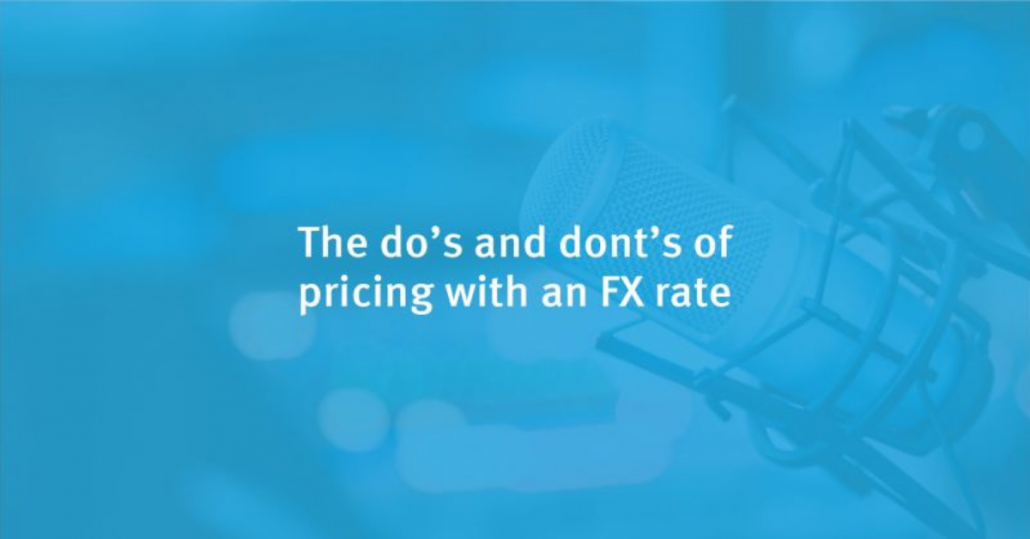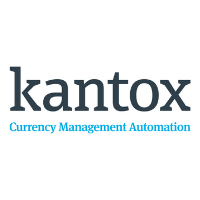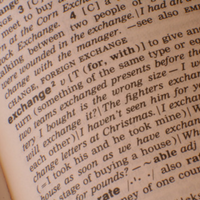The Do’s and Dont’s of Pricing with an FX Rate
09-03-2022 | treasuryXL | Kantox | LinkedIn |
Give up your time-driven rules for pricing with an FX rate and go for a data-driven approach instead!
In this article, we are going to highlight the challenges faced by treasurers as they seek to manage pricing risk. According to Toni Rami, Kantox’s co-founder and Chief Growth Officer: “Understanding pricing is perhaps the most crucial element in order to design a great FXRM program
Click on the image above for the corresponding episode of CurrencyCast
Pricing risk
Pricing risk is the risk that —between the moment an FX-driven price is set and the moment it is updated— shifts in FX markets can impact either a firm’s competitive position or its profit margins.
The natural way to reduce it is to increase the frequency of price updates. After all, the price itself is a potent hedging mechanism. But that is not an option for companies that wish to keep steady prices during a campaign/budget period or during a set of campaigns/budget periods linked together.
We will discuss this situation in further articles. Today we want to highlight the shortcomings of the most widely used criteria for pricing updates: time-driven criteria.
Shortcomings of time-driven criteria
A time-driven rule to manage pricing risk consists in setting a time frame between the moment an FX-driven price is set and the moment it is updated. It can be every 24 hours, every week, every month. Quite obviously, the longer the time to the update, the higher the risk.
At Kantox, we are convinced that this approach is arbitrary, that it doesn’t protect you against FX risk, and that it does not reflect the business or financial needs of the firm. Take the 24-hour rule. Why not 23 hours or 25 hours instead? A time-based approach does not eliminate risk: a sharp move in markets can well take place inside a very short time span before prices are updated.
Another way to see this is that it makes it more difficult for the firm to react to favourable moves in FX markets. Take the case of a firm that prices and sells in EUR and buys in USD, using the EUR-USD currency rate as a key pricing parameter. A rise in the EUR could allow it to outsmart the competition by pricing more competitively without hurting its budgeted profit margins.
Failure to take advantage of this type of opportunity is a serious shortcoming in terms of pricing strategies, at a time when —according to consultants McKinsey— pricing is becoming a key strategic element in today’s competitive landscape.
The alternative: data-driven criteria
At Kantox, we believe that such arbitrary time-driven rules should give way to a data-driven approach that consists of setting boundaries around an FX reference rate, such that prices are updated only if the market moves beyond the upper and lower bounds of those boundaries. The system then serves a new reference rate and dynamically adjusts the upper and lower bands around it.
If FX markets remain relatively stable, then the firm can keep steady prices, something that is attractive in many B2C setups. This approach also allows treasurers to take advantage of favourable moves in currency markets while protecting budgeted profit margins, independent of when these movements occur.
How far or close to the reference rate these boundaries are set reflects risk managers’ tolerance to FX risk. In addition, the pricing configuration can be adjusted according to the goals of management in terms of:
- Setting the pricing markups per client segment and per currency pair that the business strategy requires.
- Selecting the tenor of the FX rate used in pricing. Do you wish to price with the spot rate? Or with the three-month or six-month forward rate instead? If your company is based in a strong currency area such as North America or Europe, and it sells into Emerging Markets, pricing with the forward rate will protect it from adverse interest rate differentials. Firms that lack this possibility may be tempted to apply too drastic markups, thereby unnecessarily damaging their competitive position.
While most Treasury Management Systems lack what we call a ‘strong FX rate feeder’, Currency Management Automation solutions —working alongside your existing systems— allow finance teams, among many other things, to set up an efficient data-driven solution to manage all the aspects of pricing with FX rates, including pricing risk.
Worried about your FX risk health? Take our free assessment and get a personalised insights report in minutes.











